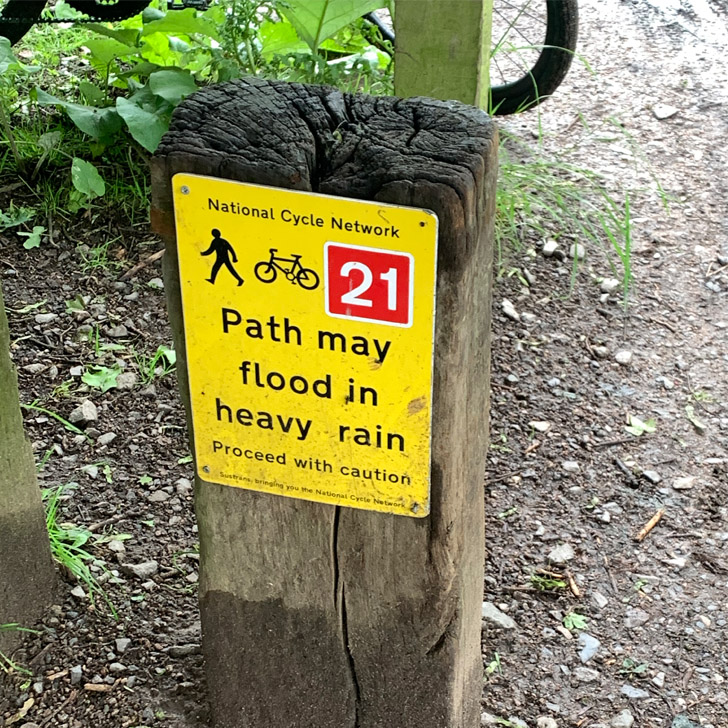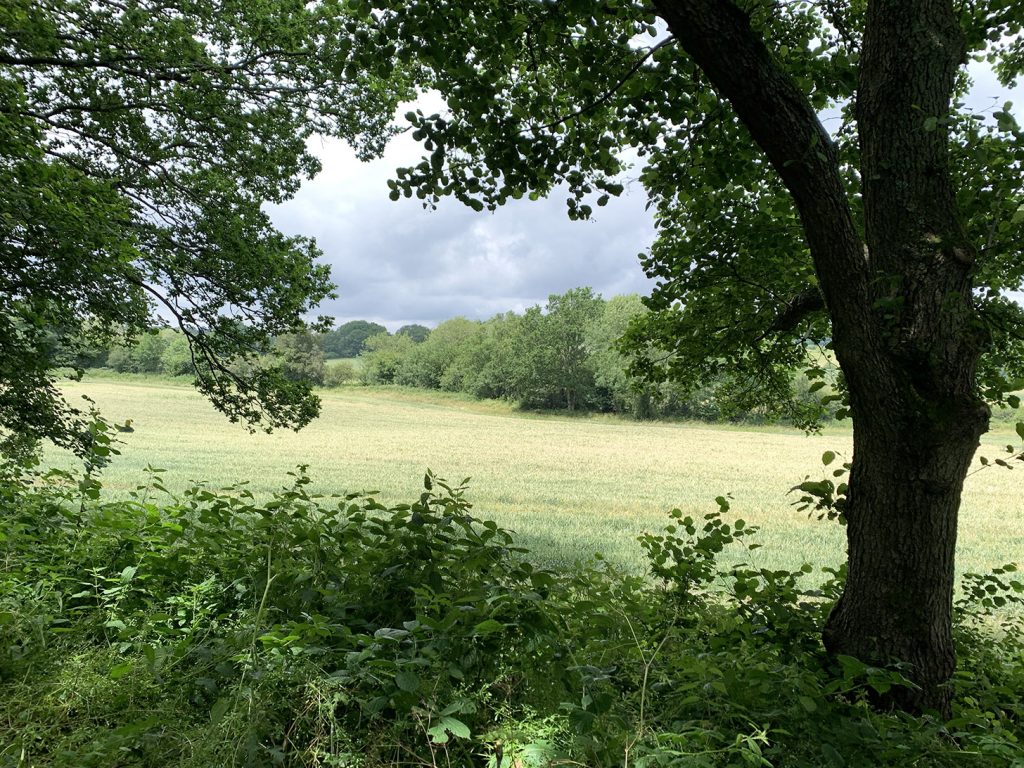
Cycling Avenue Verte in England
Back in 2019, Mr T embarked on his first ever cycle touring adventure. A three-day tour from Cambridge to Norfolk. And since he enjoyed it, he vowed this wouldn’t have been the last time he’d do a cycle tour. Two years on and he finally got to do it all again. Not quite as long this time, instead he would cycle the Avenue Verte in one day. Or at least the English part of it, from London to the coast, not crossing over to France (as if that was an option at the moment… sadly not).
Full disclaimer: Although I am the one telling you all about him cycling the Avenue Verte, I didn’t actually join him (shocking I know. But be honest, did you really believe I would?). I am just here to tell the tale so to speak.
But before I tell you all about Mr T’s experience cycling the Avenue Verte from London to Sussex, let me tell you what the Avenue Verte actually is.
Cycling the Avenue Verte: The Route
The Avenue Verte (meaning Green Way in English) is a cycle route connecting London and Paris. It was created for the London Olympics in 2012 and is just under 400 kilometres (250 miles) long.
Starting at the London Eye the Avenue Verte crosses through London, Surrey and Sussex on the English side. Crossing the Channel from Newhaven to Dieppe, the Avenue Verte then takes you through Normandy to the Ile de France and Paris, ending at the Notre-Dame de Paris.
I guess if you were to cycle the entire length of the Avenue Verte, it would probably be best to divide the route into four or five days, giving you time to take in and enjoy your surroundings. There are plenty of picturesque villages along the way, perfect for overnight stays.
For now, Mr T ‘only’ concentrated on cycling the English part of Avenue Verte. But I have a feeling he might be thinking about doing the entire route to Paris eventually.
And whilst I cannot see me volunteering in joining him any time soon, I could be convinced to go and meet him in Paris… after all, there happens to be a convenient train running between London and Paris. AND the Eurostar allows bikes to be transported, making it easy to get back to base after cycling the Avenue Verte.
Large parts of the Avenue Verte are completely traffic free. Making good use of parks and disused train tracks along the way, the Avenue Verte follows some of the already established routes of Britain’s National Cycle Network (NCN). So don’t be surprised, if you see the AV sign along the NCN signs of route 4, 20, 21 and 2.
OK, enough of me rambling about the Avenue Verte. Let’s finally get down to Mr T’s cycling adventure.
Cycling the Avenue Verte Part One: London to Morden
Before Mr T could start cycling the Avenue Verte, he needed to get to the starting point at the London Eye.

As the planned route down to the coast was already long enough for just one day, he decided to not add another 25 miles cycling from home to the London Eye. Instead, he decided to get the first train of the day to Liverpool Street Station, then cycle to Waterloo / London Eye to officially start.
At 6.30am Mr T set off from London Eye. The first bits of Avenue Verte follow the same route as Cycle Route 4. In fact, the NCN 4 sign was the only one he could find, the AV signs were nowhere to be seen at that point.
Setting off along the Thames, he would cross the Thames at Lambeth Bridge, then cycle through Millbank and Pimlico. Here he finally spotted the first Avenue Verte sign.
Crossing back at Battersea Bridge, the AV route then went along Battersea Park.
This first part of cycling the Avenue Verte was a little challenging, as manoeuvring a luggage loaded bike through early morning traffic in London, whilst trying to spot the NCN or AV signs wasn’t the easiest. Especially when approaching some of the larger roundabouts, it was easier (and a little less life-threatening) to get off the bike and follow the footpaths, than trying to work out the official cycle route.
Once Mr T got to Clapham, he finally saw his first stretch of traffic free cycling, going through Clapham Common. Up to that point, he was cycling mainly on dedicated cycle paths, but these would be dedicated lanes on the roads, with cars right next to him.
Leaving Clapham Common, it was quiet side roads and bridle ways towards and through Wandsworth Common, heading to the Wandle Valley trail.

Following the River Wandle, the Wandle Valley trail runs for approx. 20km (12.5 miles) to East Croydon Station. However, as Mr T was cycling the Avenue Verte, he didn’t go all the way. Once he got to Morden Hall Park it was time to leave the Wandle Valley trail.
Cycling the Avenue Verte Part Two: from Morden to Heathfield

From Morden Hall Park, the Avenue Verte started to follow Cycle Route 20 towards Carshalton. And this is where the pain started. So far, most of it had been fairly flat, but kilometre 24 to 40 (mile 15 to 25) was a long uphill stretch to Farthing Downs, followed by a short dip and another uphill section. Steep both going up and down.
Just before the M25 he reached the highest point of the stretch with 196m above sea level (having started at a mere 19m at the London Eye). Unfortunately, this stretch proved to be a little too much for him. He tore a muscle in his thigh and was in pain for the rest of the day (well, actually for the rest of the week). I don’t think the route would normally be too hard for him, but in recent weeks he didn’t really cycle a lot. So going from zero to 10 hours of cycling in one day probably wasn’t his brightest idea.
But since calling it a day wasn’t an option, he ploughed on regardless. Determined to cycle the Avenue Verte all the way to the coast.
As he reached Spyres Mere Natural Reserve (by now Avenue Verte had changed from NCN 20 to NCN 21), a rather peculiar sign appeared: ‘Path may flood in heavy rain. Proceed with caution’. Thanks for the warning.

Well, it wasn’t necessarily heavy rain that day, but it was far from a dry hot summer either with frequent rain spells. And there had been quite some rain the previous days.
It didn’t take long for the flooding to become apparent. He set off on his tour on gravel tyres that morning, but even those were reaching their limit. Thank God he didn’t attempt cycling the Avenue Verte on street tyres.
Next 25km were gradually downhill / fairly flat giving his thigh a little rest.
As Mr T reached Horley (approx. 65km / 40 miles into his tour) it was finally time for the first coffee break of the day. And the rather picturesque lake with sea roses provided the perfect picnic spot for it.

Freshly caffeinated, it was time to hit the road again. Just minutes later, the next ‘sight’ on his tour was Gatwick airport.
Followed by the most unpleasant part of cycling the Avenue Verte. Although, to be fair, Mr T isn’t entirely sure if he might have just taken a wrong turn. Either way, the next section of his tour included cycling alongside a dual carriage way. On a dedicated cycle path that was so overgrown that you couldn’t see any cycle signage and without a hard shoulder separating it from the dual carriageway (also known as the A23). If that wasn’t enough, he also had to cross sides several times to follow the cycle path.
But eventually he got back to better ground. The Tilgate Drive Cycle track provided a nice gravel path for easy cycling. With no cars in sight.
By the time Mr T arrived at Crawley Down, it was almost mid-day and time for a lunch break.
The next part of the Avenue Verte was rolling hills over to East Grinstead (by now, Mr T was around 80km into his tour). Railway crossings en route meant Mr T had to push his bike for a little (well, he was forced to frequently push anyway, whenever an uphill section came up, courtesy of his torn muscle).

Arriving in East Grinstead, Mr T unfortunately got lost a little, as the cycle signs were well hidden. But eventually he made it back to the Avenue Verte and out of East Grinstead.
Forest Way Country Park (aka NCN 21) was next on his route cycling the Avenue Verte. A former rail route, the flat track with hard packed gravel provided smooth and enjoyable cycling for the next 16km (10 miles) to Groombridge.
But then, it would be 22km (13.5 miles) up and down crossing the North Downs (a good 500m of elevation gain on the uphill sections) paired with some rather muddy patches. Until he eventually arrived at Heathfield.
Cycling the Avenue Verte: Heathfield to the Coast
As kids, we frequently spent our summer holidays in Heathfield, as this is where my grandparents lived, and where my dad grew up. Seeing Mr T’s photos of cycling the Cuckoo Trail brought back childhood memories.
The Cuckoo Trail is another disused rail track. It had been converted to a cycle and walking trail running from Heathfield to Eastbourne back in the 80s.
The Cuckoo Trail will provide plenty of photo opportunities along the way, so keep your eyes open.
Once Mr T arrived at Polegate, it was time for him to say goodbye from cycling Avenue Verte. As he booked himself an overnight stay in Eastbourne.
But if you were to continue cycling the Avenue Verte all the way, you would change to Cycle Route 2 now towards Newhaven.
Instead, Mr T’s plan was to do a cycle tour of the South Downs the next morning before eventually meeting up with me and the pup in Brighton, to then spend the next three days exploring Sussex and Kent together. But more on that at a later date.
Cycling the Avenue Verte: The Stats
That day, Mr T cycled a total of 141 km (87 miles), with almost 1300m elevation gain. By far not his longest tour ever. But probably one of his hardest (mainly due to his injury).
It took him a total of 8.5 hours actual cycling time, resulting in an average of just under 17km/hour.
The weather wasn’t entirely on his side. Despite it being July, the temperature averaged a meagre 14 degrees and he sure saw a lot more rain than sun. And did I mention the wind? I mean, what more could you wish for.
But then again, given the choice, he’d probably take the 14 degrees and showery rain over the recent heat wave, should he attempt cycling the Avenue Verte again.
Overall, cycling the Avenue Verte on a gravel bike was perfectly doable, but depending on weather, a hybrid or mountain bike would have been the smarter choice. Attempting the route on street tyre probably isn’t advisable. Unless you are prepared to swerve of the official route on occasions to avoid the worst bits.


